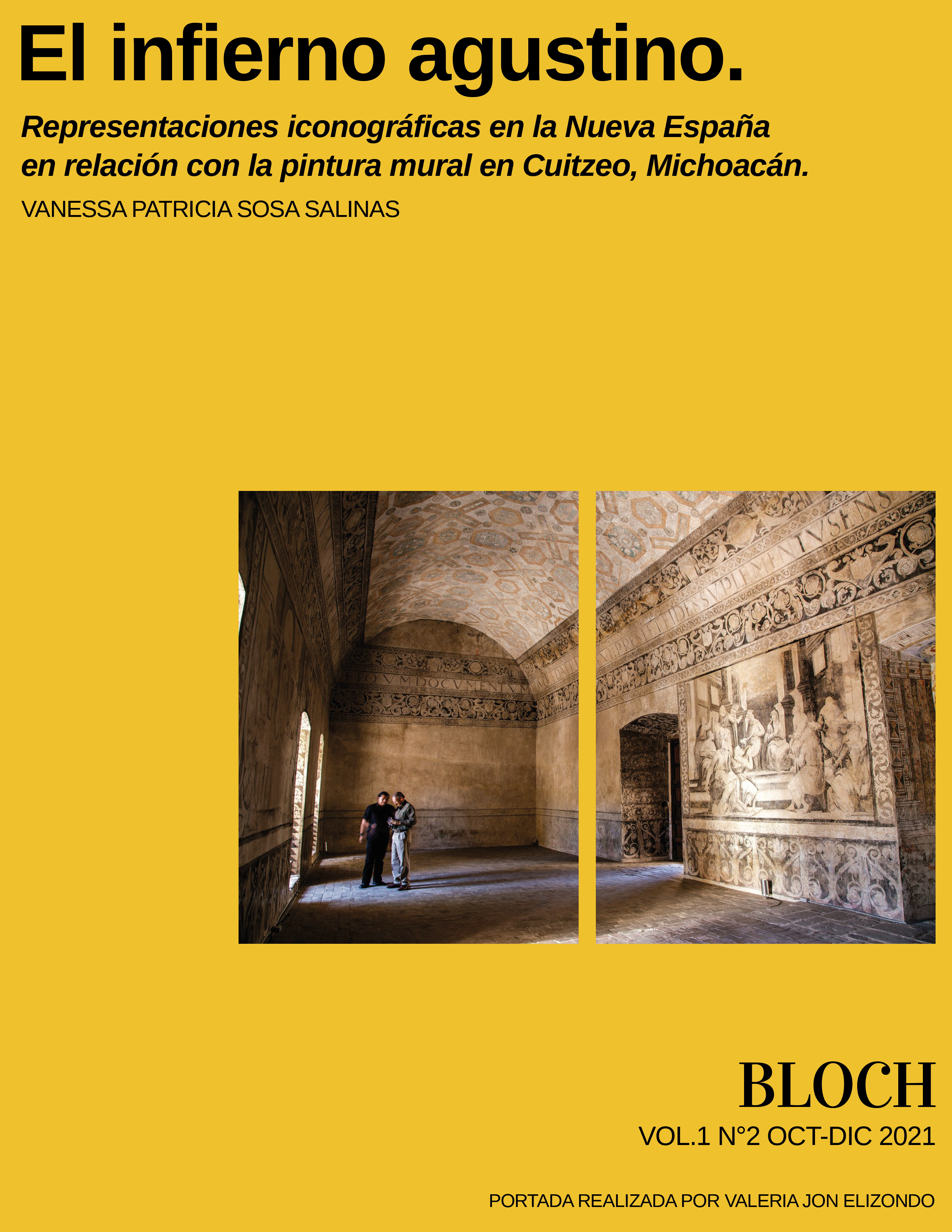The agustinian hell: Iconographic representations at the New Spain in connection with the mural painting in Cuitzeo, Michoacán

Published 2021-10-02
Keywords
- Iconographic,
- Convent,
- Novohispanic art,
- mural painting,
- Hell
How to Cite
Copyright (c) 2021 Vanessa Patricia Sosa Salinas

This work is licensed under a Creative Commons Attribution 4.0 International License.
Abstract
The present investigation falls on the idea of deploying Augustinian thought and philosophy within the New Spain convents of the 16th century, taking as a starting point the conventual complex of Cuitzeo, whose mural painting has been scarcely investigated despite its similarities with other Augustinian complexes. who have not had the same luck, specifically I will talk about the mural of the Last Judgment, its passion symbols, its demonic punishments and its cry for salvation. Their art shares the same point of interest: dominance and control, but, to what extent does fear make the population bend to the orders of the religious? Was this their true objective? How similar are they in reality the wall paintings? One could fall into the possibility of a desire for communication much more complex than dominion and evangelization, the Augustinian hell is full of intrinsic symbols and Biblical characters that will help to trace the true desire within the Augustinian thought in the new land to the that come to.
Downloads
References
- Balbino Martín, (1957). Obras de San Agustín, Tratados Escriturarios. Tomo XV. Biblioteca de Autores Cristianos.
- Ballesteros, V. (1999). La pintura mural del convento de Actopan. Universidad Autónoma del Estado de Hidalgo.
- Chuaqui, T. (2005). La ciudad de Dios de Agustín de Hipona: selección de textos políticos. Estudios públicos, 99, pp. 273-390.
- De Escobar, M., (2008). Americana Thebaida Vitas Patrum. De los religiosos ermitaños de nuestro padre San Agustín de la provincia de San Nicolás de Tolentino de Michoacán. Universidad Michoacana de San Nicolás de Hidalgo.
- Estrada, E. (2011), Muros, sargas y papeles. Imagen de lo sagrado y lo profano en el arte novohispano del siglo XVI. UNAM.
- Fernández, M. (1992). La Jerusalén Indiana. Los conventos-fortaleza mexicanos del siglo XVI. Smurfit Cartón y Papel de México.
- Hernández, J. (1979). La piel de la arquitectura. Murales de Santa María Xoxoteco. UNAM.
- Hernández, J. (2010). México arquitectura del siglo XVI. Editorial Taurus B.
- Hernández, J. (1983). Capillas abiertas aisladas de México. UNAM.
- Huerta, P. (2006). Las visiones infernales: pecados, pecadores y tormentos. En Fundación Santa María Real (Ed.), Poder y seducción de la imagen románica (pp. 79-118). Fotomecánica Camus.
- Pérez, J. (2015). La Cristianización como estrategia de resistencia: la representación del indígena cristianos en el arte del siglo XVI. Boletín Americanista, 71, pp. 15-33.
- Olmedo, M. (2012). Espiritualidad, temporalidad e identidad en un proyecto agustino. La pintura mural de los conventos de la orden de ermitaños en Nueva España. UNAM.
- Rodríguez, J. (2006). Las visiones celestiales en la iconografía románica. En Fundación Santa María Real (Ed.), Poder y seducción de la imagen románica (pp. 39-78). Fotomecánica Camus.
- Saucedo, T. (2009), Cuitzeo un pueblo de frontera: el convento de Santa María Magdalena y los agustinos en Michoacán, siglo XVI. Universidad Michoacana de San Nicolás de Hidalgo.
- Tausiet, M. & Amelang J. (Eds.). (2004) El Diablo en la Edad Moderna. Marcial Pons Historia.
- Toussaint, M. (1962). Paseos Coloniales. UNAM.
